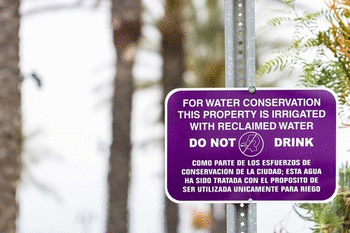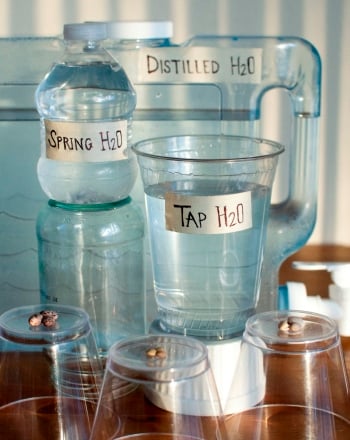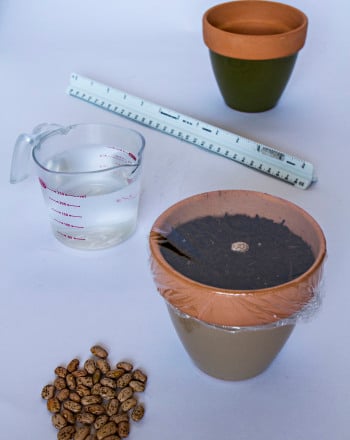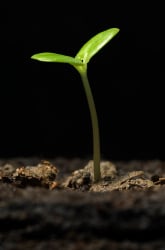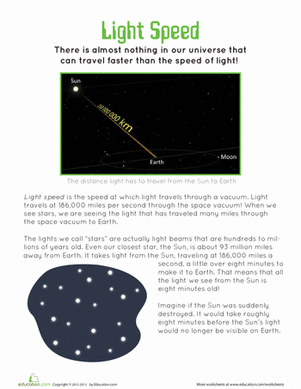Science project
Effect of Artificial Light on Plant Growth
Plants use light to make food through a process called photosynthesis. During photosynthesis, plants use the green chlorophyll, a pigment, to help convert carbon dioxide, water, and light into carbohydrates and oxygen. When they do this, they create the materials that they need to grow. This is just one reason that plants are amazing: they never need to go to the grocery store!
Problem
What types of artificial light are best for plants? What angle of light do plants prefer?
Materials
- Red light bulb
- Blue light bulb
- 3 Full spectrum light bulbs
- Warm light bulb
- 4 Boxes
- 4 Desk lamps with moveable arm
- 5 Small plant pots
- 5 cups of potting soil
- 8 Bean seeds
- Sunny window
- Water
- Plant mister
- Camera
Procedure
- To conduct this experiment, you’ll need a room that can be quite dark for two weeks. Put potting soil into the plant pots, and bury a bean seed under half an inch of soil in each pot.
- Mist the soil gently so that the beans have water.
- Place each plant in a box.
- Put the four light bulbs in the four different desk lamps.
- Place the lamp over the box so that the light does not escape from the box. Make sure that it is not touching any paper!
- Turn the lights on every morning and turn them off every evening.
- Place your fifth bean seed in a sunny window. Make sure that the soil stays damp, but not too wet.
- After a week, you will likely see a sprout coming out of the soil. Wait for another week or more, then turn on the light in the room and take a photo of each bean plant. Label the photos with the type of light the plant received. Which one grew the fastest? Does one look healthier than the others?
- Now, plant three more bean seeds in three of the pots.
- Cut a hole in the side of two of the boxes.
- Place one lamp above the bean seed, one on the side of the second pot, and one below the third pot.
- Wait for two weeks or more, then take a photo of each plant. What happened?
Results
Plants prefer full spectrum artificial light or sunlight. They grow best when the light is above the plant.
Why?
The visible spectrum of light contains many different colors. These colors are visible in a rainbow. Plants use different types and colors of light in different ways. Plants use blue light to help grow their leaves. When it is combined with blue light, red light helps a plant flower. The lights that we consider to be warm household lights have a lot of red light. Green light is not particularly helpful to plants. It is reflected off the plant’s green surfaces.
Sunlight or full spectrum light gives the full menu of light to a plant. An artificial full spectrum light bulb gives plants all of the light that they would have outdoors, so they can use it like they would use the sunlight. Sometimes a bulb can be better than sunlight, since much of the sunlight a plant gets inside the house is indirect light that is not very intense.
Plants grow toward the light, because this is their source of food. In nature, light generally shines downward. A seed begins growing in the soil, and it grows up toward the sun. The competition for this light is fierce. When a plant gets larger, it receives more light and may shade other plants below.
Why do plants grow toward the light? In part, this is due to gravity. Gravity gives plants a sense of “down” and “up,” and it means that plant roots grow down and plant shoots grow up even in the dark. However, plants also need light, so they will grow in the direction of the light. If the light is to the side, this means that the plant first grows up, then grows over. It needs to grow so that its leaves are angled to the light, and this is harder to do than if the plant were growing up, when its leaves would naturally point upwards towards the sky.
Education.com provides the Science Fair Project Ideas for informational purposes only. Education.com does not make any guarantee or representation regarding the Science Fair Project Ideas and is not responsible or liable for any loss or damage, directly or indirectly, caused by your use of such information. By accessing the Science Fair Project Ideas, you waive and renounce any claims against Education.com that arise thereof. In addition, your access to Education.com's website and Science Fair Project Ideas is covered by Education.com's Privacy Policy and site Terms of Use, which include limitations on Education.com's liability.
Warning is hereby given that not all Project Ideas are appropriate for all individuals or in all circumstances. Implementation of any Science Project Idea should be undertaken only in appropriate settings and with appropriate parental or other supervision. Reading and following the safety precautions of all materials used in a project is the sole responsibility of each individual. For further information, consult your state's handbook of Science Safety.


